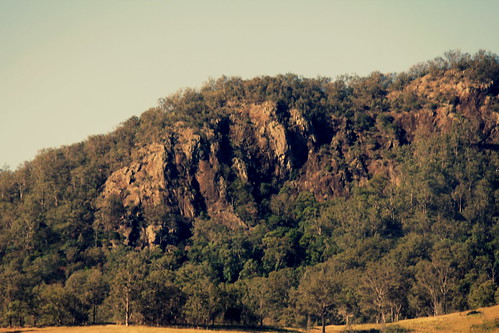
It may not be obvious while lying in the sun on a hot summer’s day, but a considerable amount of heat is also coming from below you – emanating from deep within the Earth. This heat is equivalent to more than three times the total power consumption of the entire world and drives important geological processes, such as the movement of tectonic plates and the flow of magma near the surface of the Earth. But despite this, where exactly up to half of this heat actually comes from is a mystery.
It is thought that a type of neutrinos – particles with extremely low mass – emitted by radioactive processes in the Earth’s interior may provide important clues to solving this mystery. The problem is that they are nearly impossible to catch. But in a new paper, published in the journal Nature Communications, we have set out a way to do just that.
The known sources of heat from the Earth’s interior are radioactive decays, and residual heat from when our planet was first formed. The amount of heating from radioactivity, estimated based on measurements of the composition of rock samples, is highly uncertain – accounting for anywhere from 25-90% of the total heat flow.
Elusive particles
Atoms in radioactive materials have unstable nuclei, meaning they can split up (decay to a stable state) by giving off nuclear radiation – some of which gets converted to heat. This radiation consists of various particles with specific energies – depending on what material emitted them – including neutrinos. When the radioactive elements decay within the Earth’s crust and mantle, they emit “geo-neutrinos”. In fact, each second, the Earth radiates more than a trillion trillion such particles to space. Measuring their energy can tell researchers about what material produced them and therefore the composition of the Earth’s hidden interior.
The main known sources of radioactivity within the Earth are unstable types of uranium, thorium and potassium – something we know based on samples of rock up to 200km below the surface. What lurks beneath that depth is uncertain. We know that the geo-neutrinos emitted when uranium decays have more energy than those emitted when potassium splits up. So by measuring the energy of geo-neutrinos, we can know what type of radioactive material they come from. In fact, this is a much easier way to figure out what’s inside the Earth than drilling tens of kilometres down below the surface.
Unfortunately, geo-neutrinos are notoriously difficult to detect. Rather than interacting with ordinary matter such as that inside detectors, they tend to just whizz right through them. That’s why it took a huge underground detector filled with with about 1,000 tonnes of liquid to make the first observation of geo-neutrinos, in 2003. These detectors measure neutrinos by registering their collision with atoms in the liquid.
Since then, only one other experiment has managed to observe geo-neutrinos, using a similar technology. Both measurements imply that approximately half of the Earth’s heat caused by radioactivity (20 terawatts) can be explained by decays of uranium and thorium. The source of the remaining 50% is an open question.
However, measurements so far have been unable to measure the contribution from potassium decays – the neutrinos emitted in this process have too low an energy. So it could be that the rest of the heat comes from potassium decay.
New technology
Our new research suggests we can make a map of the heat flow from inside the Earth by measuring the direction the geo-neutrino comes from, as well as its energy. This sounds simple, but the technological challenge is formidable, requiring new particle detection technology.We propose using gas-filled “time projection chamber detectors”. Such detectors work by making a 3D picture of a geo-neutrino colliding with the gas inside it – knocking off an electron from a gas atom. The movement of this electron can then be tracked over time to reconstruct one dimension of the process (time). High-resolution imaging technology can then reconstruct the two spatial dimensions of its movement. In the liquid detectors currently used, the particles that get knocked off in collisions travel such a short distance (because they are in a liquid) that the direction is impossible to resolve.

Similar detectors, on a smaller scale, are currently used to make precision measurements of neutrino interactions, and to search for dark matter. We calculated that the size of the detector needed to discover the geo-neutrinos from radioactive potassium would be 20 tonnes. To properly map the mantle composition for the first time, it would need to be 10 times more massive. We have built a prototype for such a detector, and are working on scaling up.
Measuring geo-neutrinos in this way could help map the heat flow in the Earth’s interior. This would help us to understand the evolution of the inner core by assessing the concentration of radioactive elements. It could also help unravel the longstanding mystery of what source of heat powers the convection (transfer of heat by movement of fluids) in the outer core that generates the Earth’s geomagnetic field. This field is vital for retaining our atmosphere which protects life on Earth from the sun’s harmful radiation.
Jocelyn Monroe, Professor of Physics, Royal Holloway and Michael Leyton, Postdoctoral Researcher in Physics, Royal Holloway
This article was originally published on The Conversation.
Read the original article.


